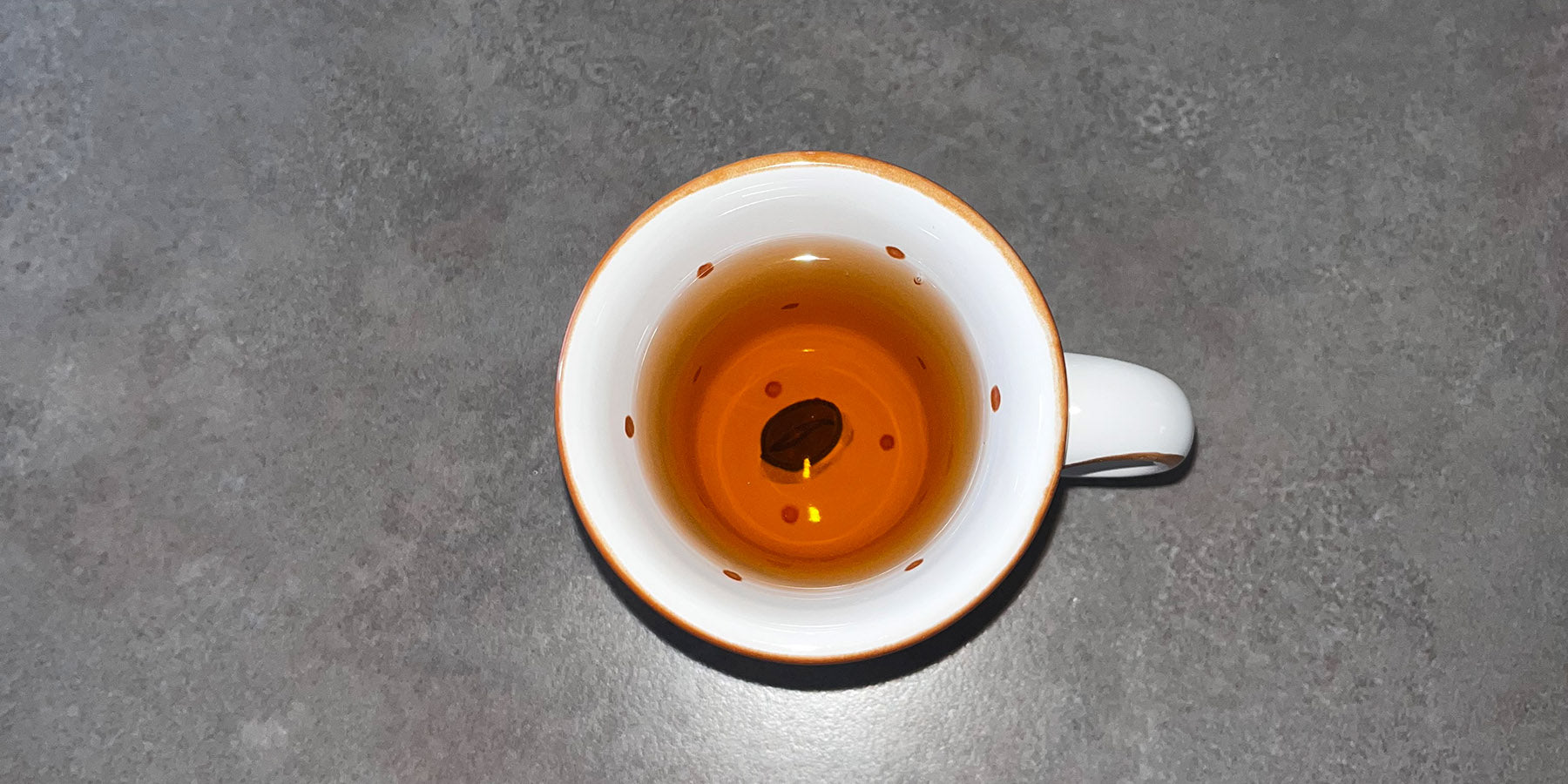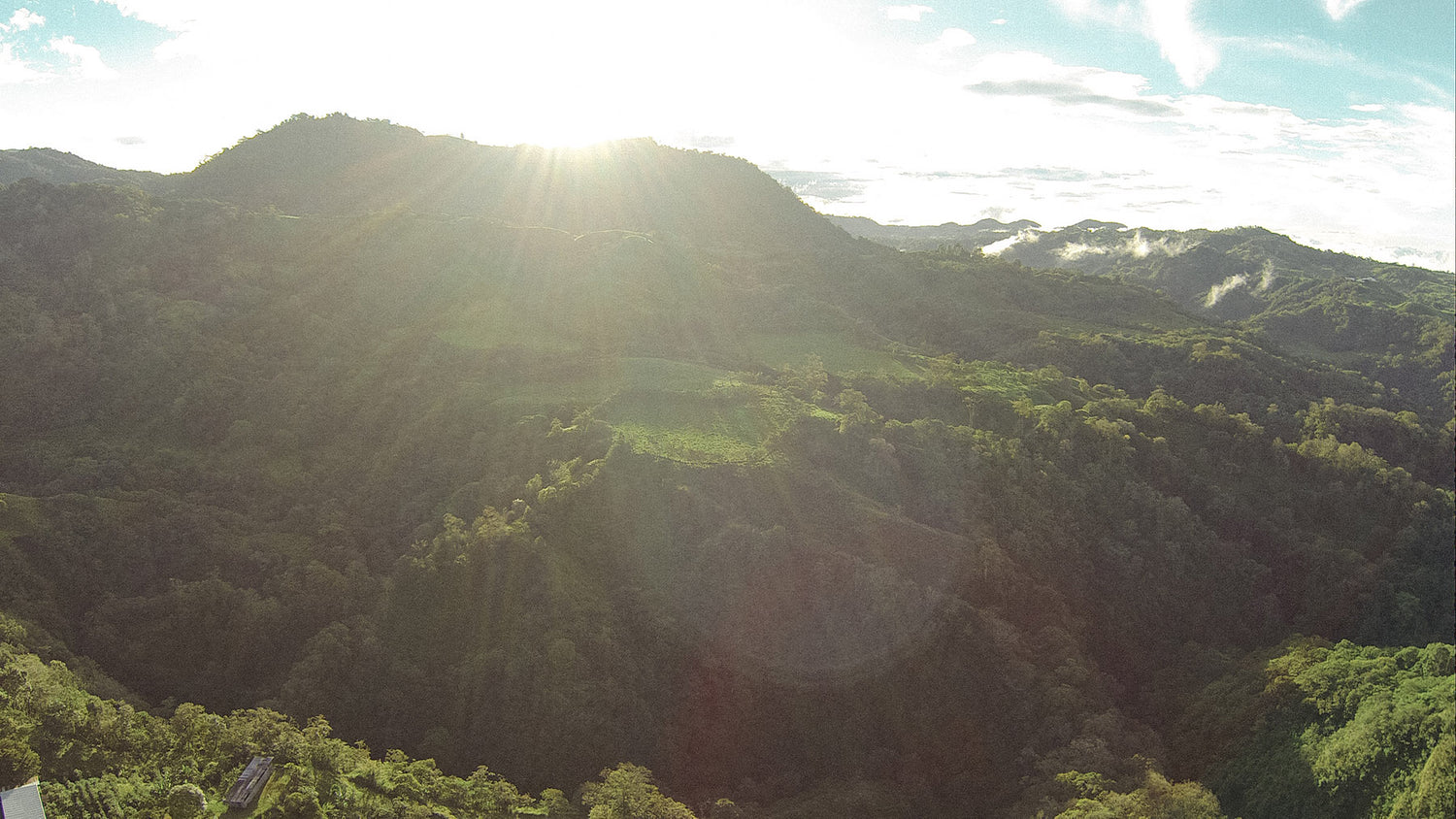You can find bad coffee everywhere - although from my own experience, it's more common at gas stations than anywhere else. But that's changing too. Nevertheless, the question remains: How can it happen that you brew bad coffee? And where do all these unusual names for bad coffee come from: Lorke, Lurke, flower coffee , Gesöff, Plörre, Blärpe et cetera.

Bad coffee – flowery coffee
According to Duden, this term is used primarily in Saxony to describe bad and thin coffee. The exact origin is not clear, but linguists assume that the coffee (at the time when this term was coined) was often brewed so thin and thus transparent that you could see the flower pattern in the cup. This may be related to the "Strewn Flowers" series of cups from the Meissen porcelain factory in 1815. A flower was painted on the bottom of the cup, which would have remained visible if the coffee had been very thin.
The humorous version of this is sword coffee . The coffee had to be so thin that you could “see” the logo of the porcelain factory, two crossed swords, on the bottom of the cup.
According to another interpretation, the name goes back to the blue-flowering chicory , whose roots were processed in large quantities in chicory factories to make coffee substitute, i.e. coffee made from “little flowers”, at the time of the coffee import ban by Frederick II and during the Napoleonic Continental Blockade.
Lorke and Lurke
Lorke, Lurke, Lorge all terms mean the same thing: a very thin, not very tasty drink, usually coffee. This term also comes from the time when coffee substitutes made from chicory or malt were widespread. The word probably comes from the French: L'orge, which means barley, which in turn can be used to make (barley) malt. Another interpretation brings the Latin Lora into play, which means pomace wine. Let's be honest, the exact origin of the word doesn't matter. If coffee tastes disgusting, it's just called "Yuck!"
Plörre, Blärpe, Broth, Plämpe
And there are many more terms and words to describe bad and weak coffee. Every region, perhaps even every family, has its own. Many come from French and many from Latin. But they all have one thing in common: they refer to the same weak coffee that leaves a bland and barely aromatic taste in our mouths. Above all , too much water is used for too little coffee when brewing. You can tell by the almost transparent color and, above all, by the taste.
How come?
Bad coffee is not only made because it is brewed too thinly. That can happen. It is much worse if you do not clean your equipment often enough and well enough . Regardless of whether it is a fully automatic machine, grinder, pump jug, etc. If you do not clean your coffee machines, coffee oils can settle and become rancid or, even worse, microorganisms and bacteria can form and get into the coffee . This will eventually make the coffee taste disgusting and even be harmful to your health. So always remember that purity comes before good coffee. This is even more true for machines that also process milk - such as fully automatic machines - because milk spoils more quickly and is worse for taste and health.

How do you prevent it?
Preventing bad coffee starts with good beans – from us, for example. But our beans can also be processed into flowery coffee. That's why the brew ratio is so important , i.e. the ratio of water to ground coffee. And this ratio is different for every drink and every preparation method. Let's take filter coffee: here we recommend 6 to 7 g of coffee per 100 ml of water. Let's assume you want to make 300 ml of coffee, then you need around 20 grams of freshly ground coffee. The result – if you brew well – certainly doesn't taste thin, but it is "thinner" than espresso. For that, you use 8 to 10 grams of coffee per just under 40 milliliters. In short: if the beans are good and the brew ratio is right, then not much can go wrong.
What to do when served?
If you are served Lorke, Plörre or Blümchenkaffee, you have different options, depending on who serves it to you.
- Spit it out, rinse your mouth, get good coffee somewhere else (if you paid for your coffee)
- Put on a brave face and drink it, unless you don't like the hosts, then point 1 is also possible
- Add a lot of milk and sugar, then it's just a different drink (if you like the hosts)
- Take a sip and then drink water (if the host asks if you didn't like the coffee, there is the option of truth or "I'm getting heart palpitations from caffeine")
Bad Coffee – Gerhard Polt
At this point I would like to quote Gerhard Polt. Because he probably developed the best and funniest version of bad coffee : Swedish coffee . You don't know Swedish coffee? Yes, where do you live? Then I'll explain Swedish coffee to you. You take a large cup and throw a 10 cent piece in. Then you fill it up with coffee until you can no longer see the tenner. OK? And then you fill it up with clear liquor until you see the coin again.
This isn't flowery coffee per se, but it certainly deserves the name swill, lorke and swill. I tried it once, so believe me when I say: In terms of taste, it can easily compete with poorly brewed coffee. The only advantage is that you'll be drunk after just a few sips.

Conclusion
In the past – when coffee was a luxury product and therefore only affordable for a few people – you would often come across flowery coffee. Good bean coffee was often diluted or replaced with similar tasting drinks such as chicory coffee or malt coffee. Today, pretty much anyone can afford good coffee, and yet you can still come across bad coffee . Believe it or not, flowery coffee or swill is lurking everywhere: at the in-laws' houses, at gas stations, at rest stops, in restaurants and even cafés, and sometimes even at the homes of good friends. For most people, it is not malicious intent, but rather ignorance and carelessness. So always stay calm and hope for the next cup of good coffee ! Speaking of which, you can find our excellent coffee in the shop here.


